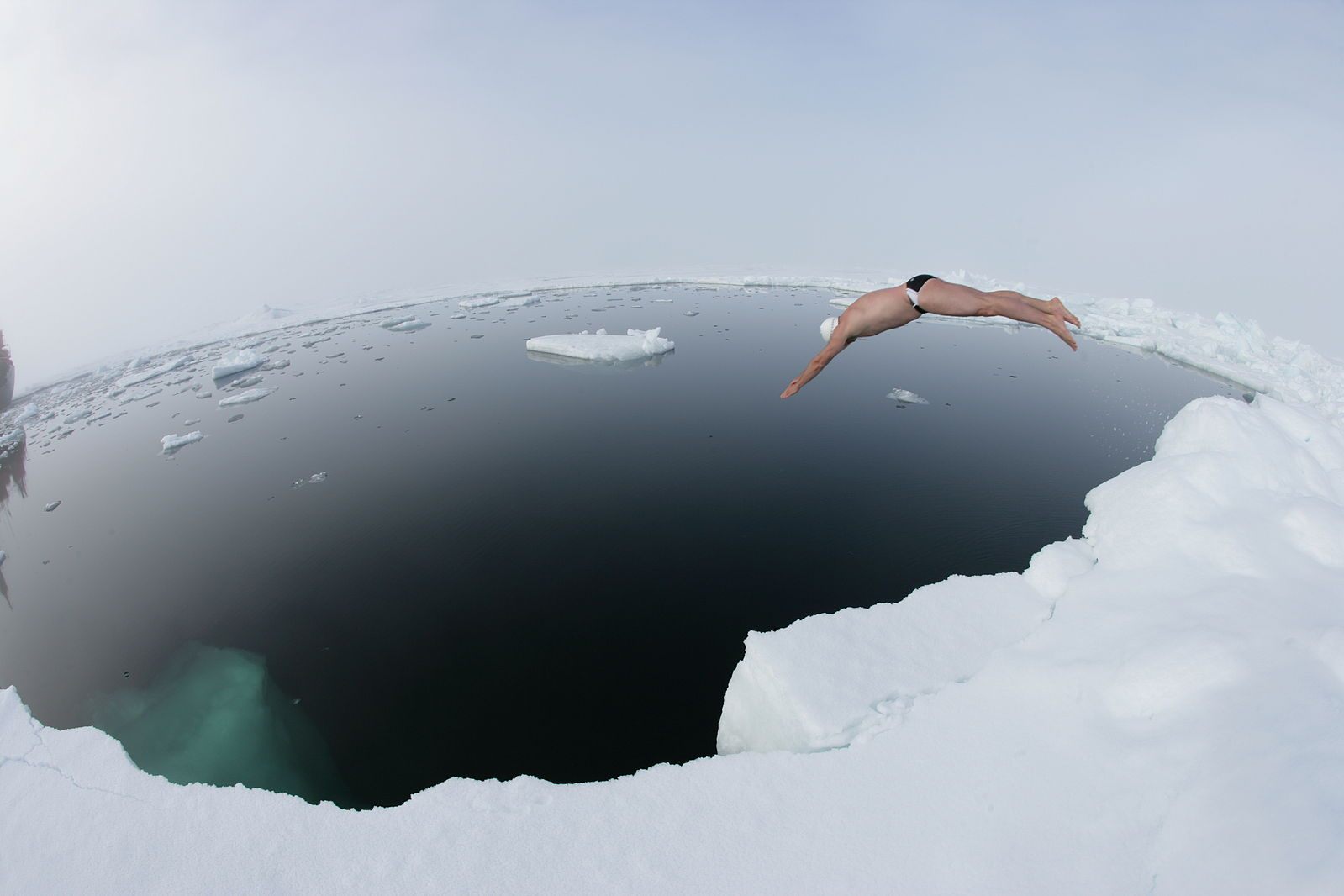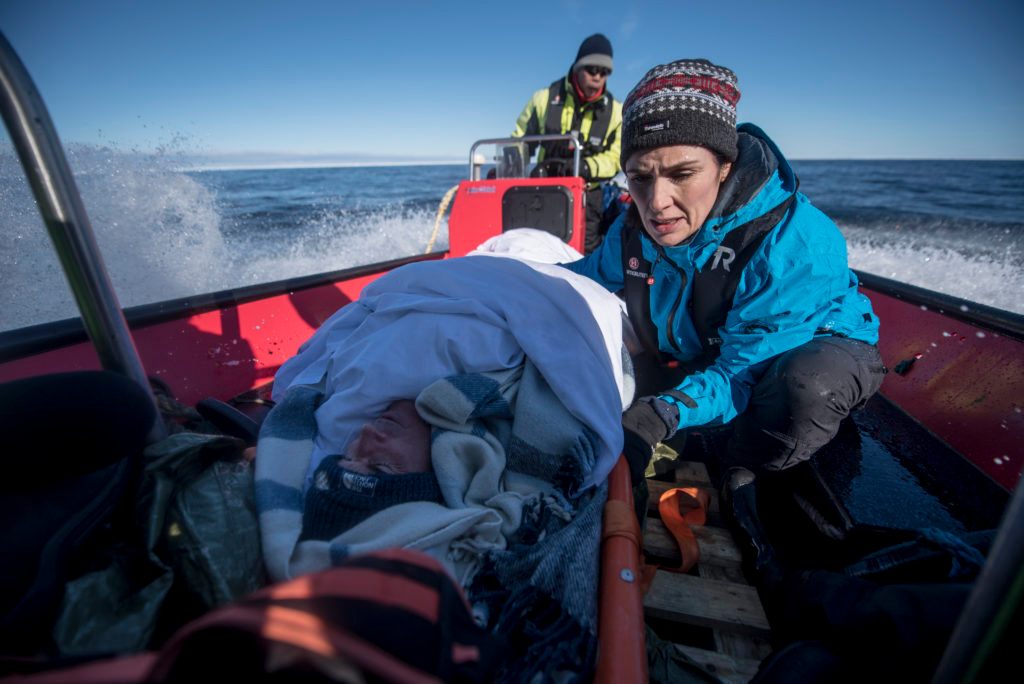This Speedo-Clad Environmentalist Is Swimming Through the Melting Arctic
Endurance athlete Lewis Pugh is braving subzero water to draw attention to the effects of climate change.

Our Arctic ice cap is melting. Many people know this, but endurance swimmer and environmentalist Lewis Pugh has taken it upon himself to truly feel it. This past Saturday, July 30, Pugh swam a full kilometer along the edge of melting sea ice in the subzero Arctic Ocean, clad only in a swim cap, goggles, and a Speedo.
Pugh has spent the last ten years braving freezing water in order to encourage international action around climate change. This was the first in what he is calling his Arctic Decade Campaign, during which he will swim long distances through formerly frozen seas in Norway, Canada, and Russia—“places that, until recently, were not swimmable at all,” he writes.
Pugh called this past weekend’s swim, in Norway, “the toughest of my life.” As he writes in his latest blog post, the ocean clocked in at half a degree below freezing on the Saturday of his swim, and the subzero temperatures threw him off, shortening his strokes and preventing his hands from properly gripping the water.

Although Pugh almost threw in the towel at 650 meters, he kept going, and completed the entire kilometer. It took him 22 minutes, the longest amount of time he’s spent in such cold water. When he was finished, he had to bite the arm of one of his support team members in order to get hauled into the boat, because he couldn’t grab onto him any other way.
Pugh began raising climate change awareness through Arctic swimming in 2007, when he accomplished a similar one-kilometer swim across newly-open ocean. In the ten years since he undertook that endeavor, glaciers have disappeared, climate irregularities have increased, and we’ve seen some of the lowest sea ice coverage in recorded history.
Meanwhile, Pugh says, the world has largely failed to rise to the occasion. “Over the last ten years people have often said to me, ‘You must be mad to swim there,’” he recently wrote. “But I feel like the rest of the world is mad, and I am the sane one.”

On Twitter, Pugh took the time to answer questions about something that people are endlessly curious about: how he manages to complete these freezing swims. Before an Arctic plunge, he says, he trains in progressively colder ocean water, getting himself mentally and physically ready.
“If I start thinking I am cold, I’ll be out [of] the water very quickly,” he writes. (The near-Arctic ocean he practiced in for this swim, in Longyearbyen, was not as chilly as he would have preferred for training in—another symptom of climate change.)

Over thirty years of cold-water training, he explains, even his physiology has changed—when he’s about to dive in, his body temperature rises in anticipation, sometimes up to 100.7 degrees Fahrenheit.
Some of his tips can be applied more generally, though: “I always dive in,” he writes in one post. “If you dip your toes in, you’re just spending longer in the cold.”
“Besides,” he concludes, “It’s important to commit 100%.”
Every day, we track down a fleeting wonder—something amazing that’s only happening right now. Have a tip for us? Tell us about it! Send your temporary miracles to cara@atlasobscura.com.










Follow us on Twitter to get the latest on the world's hidden wonders.
Like us on Facebook to get the latest on the world's hidden wonders.
Follow us on Twitter Like us on Facebook